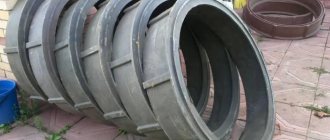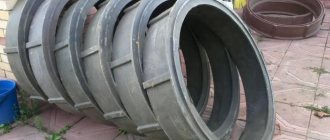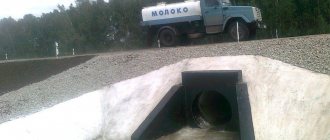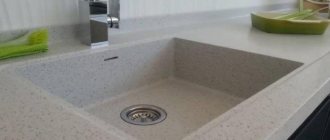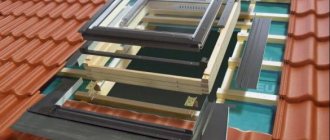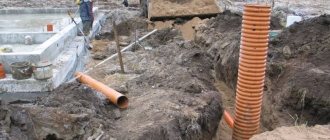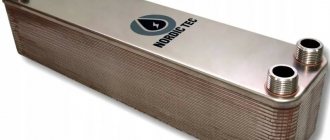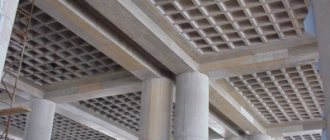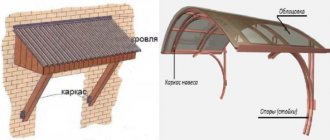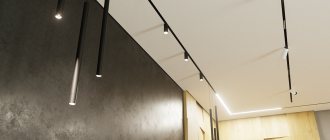Today, not every person can afford to have their own well, because this requires a certain area of land and many more additions. In this article we will look at what exactly is needed to build this treasure of water, the stages of its construction, safety precautions and much more.
Wells have the following advantages of their content:
- They always provide water , and are needed in those areas where there are interruptions in water and electricity.
- They are not very expensive and require minimal maintenance.
- They serve for a very long time. Usually they are buried only when the water sources drop very low, which can happen after at least forty years.
- They provide tasty and clean water if built correctly.
- Compared to wells and wells, they are very cheap.
The disadvantages are:
- There is a high risk of water pollution , which may be due to poor ecology and also due to foreign objects getting inside the well.
- Old pipes may taste rusty.
- If wells are not used for their intended purpose for several years , then their bottoms will become silted, so they will need to be cleaned.
- A small amount of water can be collected at a time (except when the owner installs a pumping system).
- If this is the only source of water , then it will obviously not be enough to water the garden, garden, flower beds or water supply to the pool.
Device
Well construction
The sewer well has the following features of its design:
- It should be located as far as possible from a regular well.
- Externally, such drain structures have a round or square shape , the bottom of which is filled with concrete.
- When building them, it is very important to make the walls and bottom airtight so that dirty wastewater does not enter the soil.
- They need to be cleaned with suction pumps.
- Typically, such structures are made of brick or concrete rings.
The pipeline, which is intended to be used all year round, should be installed with a slight slope towards the well. This is necessary so that water can be quickly drained from the system when interruptions occur.
A ventilation drain is needed to remove gases and unpleasant odors from the mine that will accumulate in it. It’s better to do several of them at once.
The installation of the power supply system and piping must be done on three-conductor copper cable with rope for outdoor use.
According to the standards, pipes must have the following dimensions in their design:
- For pipelines with a diameter of up to 140 mm - no less than 70 mm.
- On pipes up to 600 mm – 1000 mm.
- On pipes with 700 mm - 1250 mm.
- On pipes from 1000 mm - 15000 mm.
Materials for arranging a sewer shaft
Plastic materials are very popular. Such shafts have important advantages, including the reliability of the structure, its durability, as well as easy installation work.
According to its technical characteristics, plastic has the following advantages:
- High margin of safety and resistance to critical loads;
- Increased wear resistance;
- Smooth surface of the pipes, preventing the formation of build-up;
- Possibility of obtaining perfect tightness at the joints of parts.
An important disadvantage of plastic systems is considered to be used only in cases where the load on the sewer system is minimal. In addition, plastic is not suitable for installing a well in soft or constantly moving soil.
Concrete is not giving up its position either. This material, despite the difficulties during installation, is used everywhere.
Among the advantages of concrete structures it is worth noting:
- Possibility of use in any type of soil;
- Quick installation of rings;
- High margin of safety and reliability;
- Unaffected by chemicals.
The disadvantages are the large weight of the structures, which requires the use of special equipment, as well as the need to equip a tray in the sewer well for each structure.
Kinds
Wells come in the following types:
Concrete
They are round shafts into which concrete rings are inserted. They are very popular and do not require much effort to build.
Wooden
They are more ancient and were used in old villages. The advantage of such structures is that they provide clean water. The downside is that they are not as durable as concrete ones.
Mine
These structures, when constructed correctly, provide good water and last a long time. The depth of the mine well is usually small - from 3 to 15 meters.
Tubular or drill
It is a well that has a water filter and a pump. Also, special pipes with filters are lowered into this well and everything is hermetically sealed to prevent air from entering when the electric pump is operating. If all components are well installed, such a structure can function properly for decades.
Filters for absorption structures
The difference between filter absorption wells is the absence of a sealed bottom. At the bottom of the working chamber of the structure, a bottom filter is equipped, consisting of the following types of materials that differ in fraction:
- River sand. Backfill with a high content of quartz, which has a fine fraction, is mined in river quarries and includes silt, clay and other impurities in the smallest quantities.
- Gravel. Loose backfill of the middle fraction, which is a sedimentary rock capable of absorbing various substances, which makes it possible to use it as an adsorbent.
- Pebbles. Pebbles measuring 1-15 cm, having a rounded shape, obtained when they collide with each other at the bottom or on the shore of reservoirs, need to be washed before backfilling.
- Crushed stone. Pebbles of medium and large size, formed as a result of crushing boulders, various rocks or waste from the metallurgical industry, therefore, when purchasing material, a certificate must be checked, which confirms the safe level of natural radioactivity.
- Jade. The backfill of the coarse fraction, which is sodium-aluminum silicate, resembling greenish jade, is chemically inert when interacting with water.
- Shungite. A rock formed from ancient bottom organic sediments, used as an adsorbent, requiring periodic replacement in the same way as gravel.
When choosing the mineral shungite, you must be careful, since unscrupulous sellers tend to sell not shungite, but shungizite, which superficially resembles it, but does not have such useful properties.
The filter filling, created using the listed materials, represents the working part of the well. It must have a total height of up to 1 m.
Selecting a location
When choosing a place to build this structure, you should be guided by the following recommendations, since the quality of future water depends on it:
- You need to dig it as far as possible from sewers , toilets and sources of household pollution that enter the ground. The minimum distance from such an environment should be thirty meters.
- If you have your own autonomous sewer system , which is not equipped with a bottom, then it will need to be redone or made completely closed (sealed) so that no waste gets into the groundwater, otherwise the water will become unsafe for consumption.
- If water is needed specifically for household needs , then the well should be located as close to the house as possible.
- To prevent the penetration of sewage waste from neighbors , the well construction must be installed in an elevated place.
- It is advisable to dig where underground water flows are expected to pass.
The most favorable time for digging is considered to be the period from the end of July to October, since it is during this period that the water layers seem to be depleted, so that when digging a mine for water, they will not interfere with the work.
conclusions
As you can see, you can dig a well on your own, without resorting to the help of specialized teams. If you take into account all the tips given here, you will end up with a fairly high-quality and durable structure that will provide water not only for you, but also for your children and even grandchildren for up to a hundred years, or even more.
1. MGBU (https://samobur.ru/) - A drilling rig store for professionals and beginners, sells products at manufacturer prices. Advantages: delivery to all regions of the Russian Federation, free educational materials. 2. Buragregat (https://buragregat.rf) is an enterprise that sells drilling units of joint Italian-Russian production. Extended 3-year warranty on all equipment under a special program. 3. Transnkomplektservice (https://www.tks-water.ru/) - a store that sells not only drilling units, but also other equipment for the construction of sewer, drainage and other systems. 4. TN Tekhnolog (https://www.burenie-vsem.ru) - A store of drilling rigs for professionals and beginners - a wide range of equipment at affordable prices. 5. Mosburservice enterprise (https://burmashprom.ru/) - sells wide-purpose drilling equipment. Advantages - long-term warranty on the offered equipment, training in working with it.
DIY construction
To construct a water extraction device, you should prepare the following tools:
- shovels of different lengths and widths;
- large volume buckets
- winch;
- device for lifting the earthen layer;
- saw ;
- trolley for transporting earth;
- sheet for mixing concrete or concrete mixer;
- hoses for pumping water;
- rope ladder
- hammer ;
- cable;
- lighting devices
The step-by-step construction guide looks like this:
- Clear the area for digging the mine.
- Dig a deep shaft with dimensions of 1.5 by 1.5 meters and a depth of 5 to 20 meters.
- Clear the mine of possible gas accumulations.
- At the bottom of the shaft, rake out the soil until the first water appears.
- After this, you need to install wooden supports or concrete circles (depending on the type of well you have chosen).
- When constructing a wooden well, you should make supports for each crown, which must first be placed on all sides of the shaft. You need to hammer them in with a heavy sledgehammer.
- The final stage is the installation of a “lock” for water. To do this, you need to dig a pit around the well with a depth of one meter and a distance of at least one meter from the walls of the shaft. Therefore, you should pour a greasy type of clay there and compact it well. This action will provide a so-called “castle” made of clay, which will block surface water from entering the well.
- Now let's move on to the ground part. To protect against precipitation, you should make a large canopy over the mine or build a small house over it. For greater convenience, the doors of such a house should consist of two compartments and open together.
Safety precautions
In order to avoid accidents and injuries when digging wells, you should adhere to the following safety rules:
- Before the first descent into the mine, you need to check its degree of gas contamination. This can be easily done by setting fire to straw or paper, which must be thrown into the bottom of the shaft. If there are a lot of flammable gases, then the thrown paper will burn violently. If everything is normal, then it will go out. You can also use special devices - gas analyzers, which will accurately determine the gas level.
- You can go down into the mine only after removing harmful gases from it , which need to be displaced by fresh air directed from bottom to top. To do this, you should use compressors or vacuum cleaners, which must first be lowered to the bottom.
- The soil must be removed with a bucket , but care must be taken to ensure that it does not have the opportunity to tip over or break the rope.
- The entire lifting system must be very strong.
- A working person must have a construction helmet or a regular motorcycle helmet on his head below.
- You cannot dig a mine alone , because such a person may become ill due to lack of air. There must be one more person on the surface at all times to monitor his condition.
- It is very important to determine in advance the call or signal if an unforeseen situation occurs in the mine (water breakthrough, etc.). The person on the outside must react quickly and reach another worker from below the shaft.
In Vasmer Max's dictionary
well well, old Russian. well (Laurentian letop.), Ukrainian. well, blr. Kolodzez, st.-slav. treasure (Euch. Sin.), Bulgarian. treasurer, Serbohorv. Kladenac, Slovenian. kladénǝc. Converted from ancient German. (Goth.) *kalding- from *kaldiōn (from which Finnish kaltio “source”), Old Norse. kelda “source” – to Goth. kalds “cold”, using suf. -ets (-s) or under the influence of Tslav. student Wed. Swiss local n. Källingе from källa, Danish. kilde "source", Finnish-Sw. Kaldinge; see Ekblom, Mel. Perpersen 417 et seq.; Thorbjornsson 1, 81; Bernecker 1, 543 et seq.; Frenkel, IF 70, 106; Mi. EW 123; Setele, FUF 13, 375; Yagich, AfslPh 10, 195; Meilleux, Ét. 355; Uhlenbeck, AfslPh 15, 488; Sobolevsky, Lectures 82, 145; RFV 22, 31; Knutsson, Palat. 64; Stender-Petersen 277 et seq. The elevation of the word well to deck (see) in Brückner (ZfslPh 6, 65; AfslPh 42, 139), Bugi (RFV 70, 255), Kiparsky (38 et seq.) is unconvincing. Brandt (RFV 22, 138 et seq.) considers the original absolutely incredible ancestral form *хoldędзь (from cold), transformed according to the deck. Wed. meaning Norwegian-Danish verma, vermsl “a source that does not freeze in winter” (Falk-Thorpe 507), as well as lit. šaltìnis "spring"; šáltas “cold”, tslav. student Kiparsky (VYa, 1956, No. 5, p. 134) came out in defense of the original glory. origin of the word well (from deck). I find this etymology unconvincing due to the presence of suf. -ędzь and abundance of names of rivers from wells. The latter speaks rather about the originality of the meaning. “source”, not “well with a wooden frame”. •• (See also Kiparsky, “Neuphilol. Mitteil.”, 54, 1953, p. 378 et seq.; Lvov, “Reports and communications. In. Language,” 10, 1956, p. 45 et seq. - T.)
Well-well
Very often, people do not want to bother with a well and want to make a well for themselves. Let's consider the pros and cons of such a water source.
The advantages include:
- Easy to care for. The well does not need cleaning, so the only thing you need to do is monitor its operation.
- Large volume of water that can be taken.
- Low risk of contamination due to the very narrow “neck” of the well, through which leaves, debris and other waste do not fall.
Disadvantages include:
- Quite a high cost for drilling.
- Possibility of odor appearing in water , which will be a consequence of using low-quality metal.
Independent hydrogeological surveys
The approximate depth of the mine can be determined in advance. To do this, you need to go around the neighboring areas and find out at what level the water is in the nearby wells. You should ask whether the well was dug for technical or drinking purposes and whether the groundwater level in it is stable.
At the same time, it’s worth asking around whether it was difficult to develop the mine, and whether large boulders were encountered during digging.
The survey method is acceptable if the estate is located on flat terrain with slight hilliness. There, the layers of rocks lie almost horizontally, approximately repeating the shape of the natural relief.
The groundwater table is located approximately at the same level, because in permeable rocks the principle of communicating vessels operates. The difference in the length of the shaft can only be caused by differences in the elevations of the well mouths.
The depth of underground water in a mine planned for construction in a flat area can also be determined in advance using a neighbor’s well as a guide. To do this you will need an aneroid barometer.
The scale of this device is marked with divisions every 0.1 mm. The distance between divisions corresponds to 1 meter difference in elevation.
For example, measurements near an existing well showed a level of 634.7, and at the site of future production, the barometer needle stopped at 633.8. This means that groundwater will appear at a depth of 9 m.
The depth of groundwater can be determined using an aneroid barometer by comparing the readings above the neighbor's well and the planned place to dig your own
The survey method does not work in regions with high occurrence of rocky and semi-rocky rocks. Especially if you have to extract fractured water, which spreads sporadically and sometimes flows into adjacent layers.
Surveys will not be of much help in areas with pronounced hilliness, where it is impossible to accurately represent the geological section without surveys. It is advisable for owners of plots in such areas to contact the local center for designing water supply and sewerage networks or a hydrogeological organization.
More information about searching for the aquifer is provided in this article.
SNiP and cost of work
According to SNiP, sewer wells should be located every 34 meters, with 200 m on straight sections of pipes.
Also, when constructing a pit for a well, you should proceed according to the following plan:
- Mark the area where the mine will be dug.
- Remove trees or bushes that will interfere with this.
- Dig a mine.
- Clean the bottom.
- Align corners and walls.
- Make drainage at the bottom.
The cost of digging a well includes the following prices:
- Setting up a mine of concrete rings costs 2,000 rubles per ring depth. The ring itself costs 2,000 rubles.
- To install a structure deeper than 16 meters , you must pay 2,300 rubles for each subsequent ring.
- A house for the top of a well costs 6,000 rubles.
What do experts recommend?
Valentin Semenov, master driller: There is no need to rush to immediately drink water from the well. It is better to take the samples for analysis to a laboratory after it has cleared. This will allow you to be calm about the quality of the water. Konstantin Ivanovich Dyachenko, master driller: You can, of course, first dig the entire shaft to the required depth, and only then lower all the rings into it. But in practice, this can lead to the collapse of the unstrengthened walls of the well before it is dug to its full depth.
Adviсe
- The process of building mines is very labor-intensive and requires certain skills and knowledge, so their construction must be approached with the utmost care and seriousness.
- Safety comes first , so do not neglect it when digging a mine for water.
- The upper house can have a wide variety of shapes and sizes. The main thing is that it is convenient to pull water out of it. As for his appearance, this is a matter of taste for each person.
